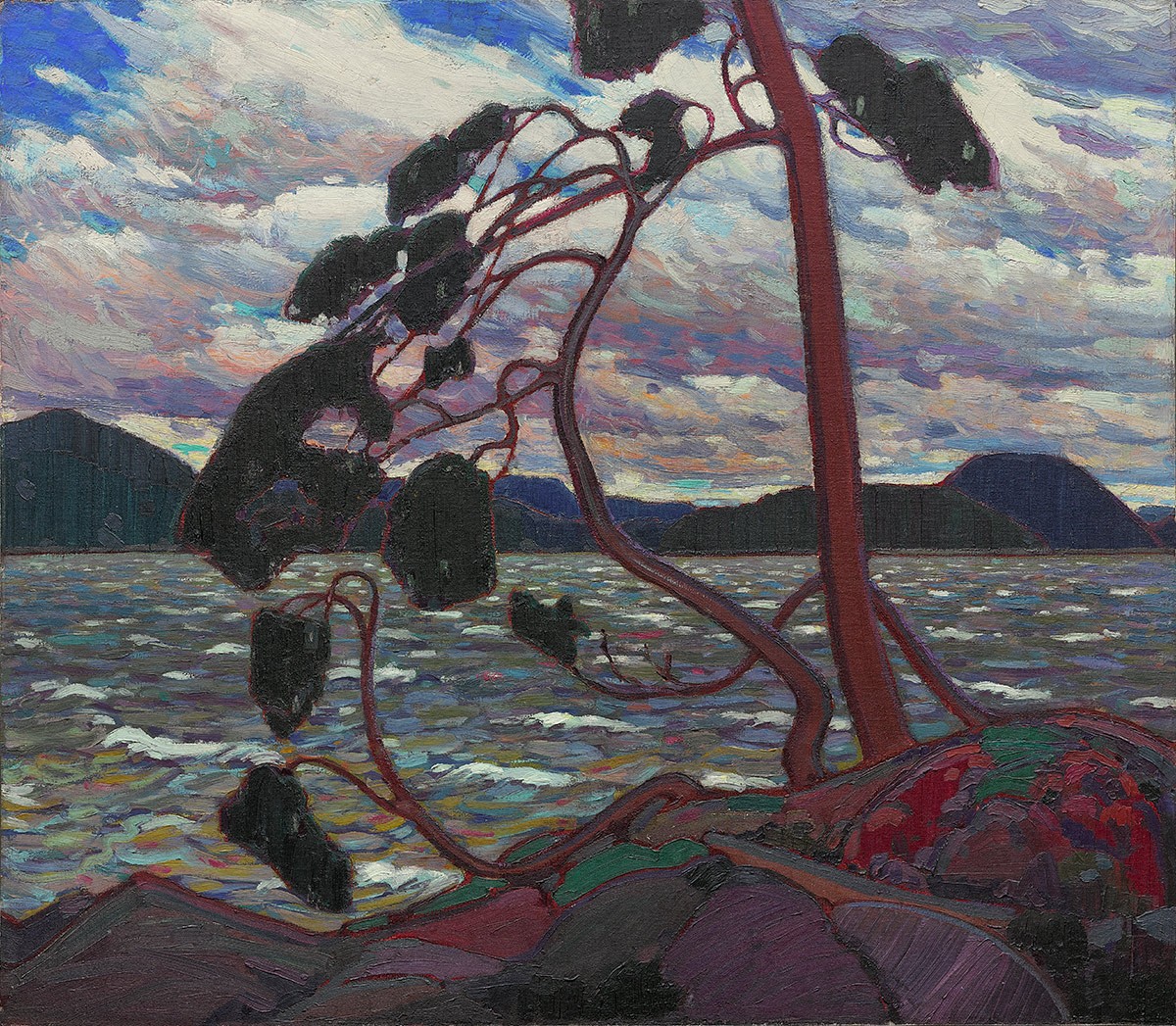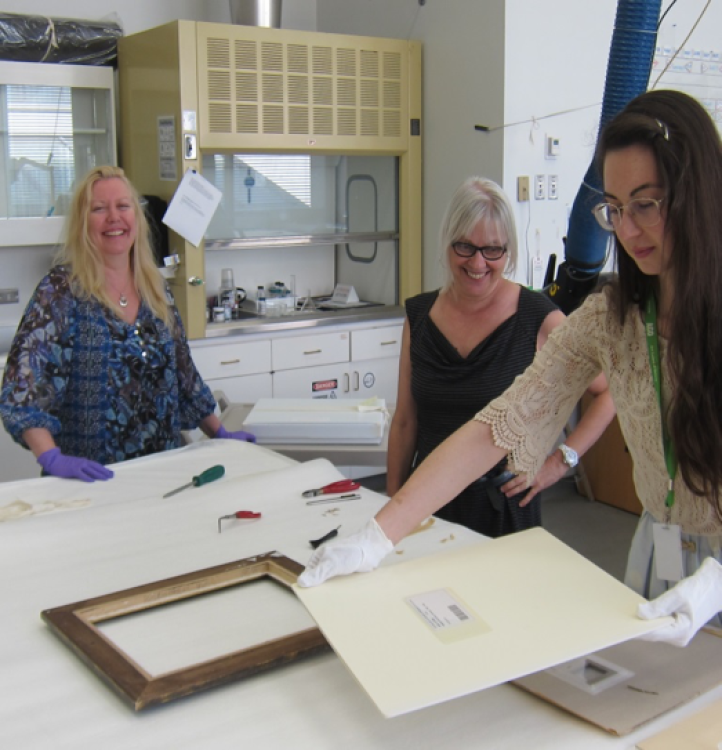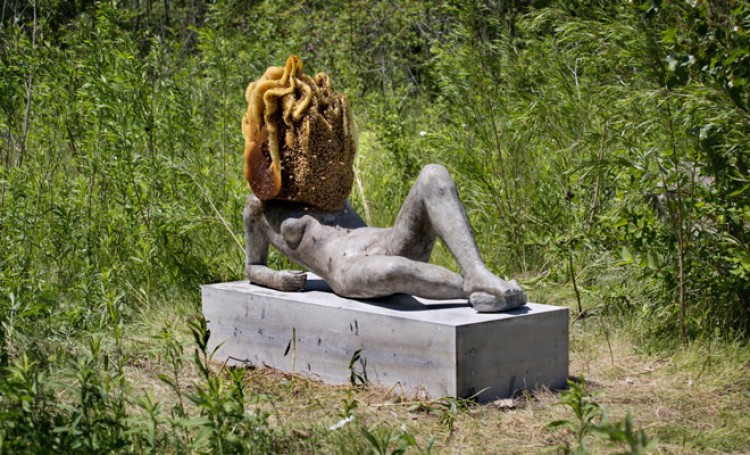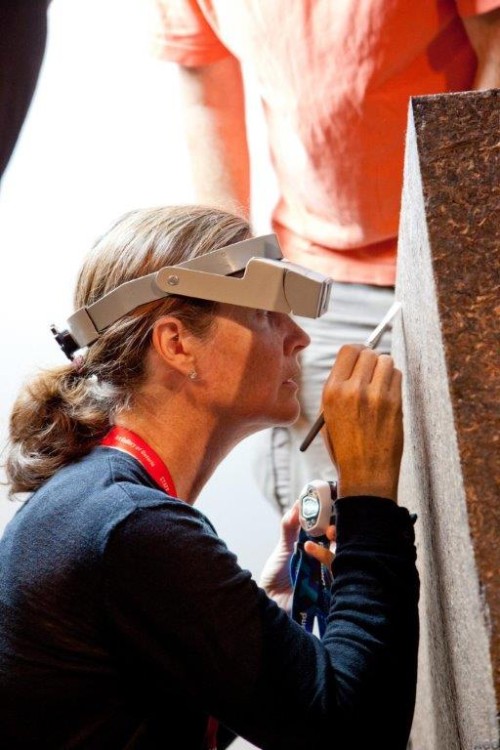How to conserve Tom Thomson's "The West Wind" (1917)
A look back at the steps taken to preserve this iconic work.

By Katharine Whitman (Conservator), Maria Sullivan (Manager, Conservation), and Andrew Hunter (Frederik S. Eaton Curator, Canadian Art)
Tom Thomson first painted in Algonquin Park in May 1912 and returned there every spring, summer and fall until his death in 1917. Thomson had a small paintbox containing his paints and brushes, and created numerous small sketches during his visits to the park. He would then use the sketches to create large oil on canvas paintings in his studio in Toronto in the winter. The piece below, Sketch for “The West Wind”, measures just over 8 x 10 ½ inches and is oil on wood panel. One can see the quick, confident brushstrokes in the piece, and imagine how quickly the work was created.

The trees depicted in Sketch for the West Wind are jack pines in Algonquin Park and were sketched from the old park ranger cabin, where Thomson lived while working as a fire ranger there during two summers. The conditions in the park were at times treacherous, as described in the following excerpt from a letter:
It may interest you to know that the "West Wind' was done at Lake Cauchon. Thomson, myself, Lorne [sic] Harris…were up there. It was blowing very hard and Lorne Harris was painting further up shore. The wind blew down the tree of the picture and Harris at first thought Thomson was killed but he soon sprang up, waved his hand to him and went on painting.
— A letter from Dr. James MacCallum to Mrs. A.C. Beatty, 1916
The larger painting, The West Wind, measuring 47 ½ x 54 5/16 inches, was painted in Thomson’s Toronto studio over the winter of 1916–17, the year of his sudden death. The West Wind was acquired by the AGO in 1926 and is one of the best known and most valued works in the collection. The picture below (figure 3) is from the inaugural exhibition in 1926, and The West Wind can be seen on the right (the equally ambitious canvas The Jack Pine, now in the collection of the National Gallery of Canada hangs to the left.

Conservation treatment of The West Wind was undertaken in 2013–2014 by Maria Sullivan, AGO conservation department manager and a painting conservator. The painting was in reasonably good structural condition, with a few areas of loose paint and abrasions. The varnish that had been applied in a 1971, in an earlier treatment, had become hazy and matte in appearance. There was a loss of saturation in the darker colours and a goal of the treatment was to recover the saturated look.

The first steps in treatment were to stabilize the loose areas of paint. This was accomplished by gently re-adhering the loose paint using conservation methods. After much testing, the varnish was removed (Figure 4) using a special mixture of organic solvents on cotton swabs, often with the aid of a microscope. The painting was then re-varnished with a stable, reversible conservation varnish, re-saturating the colours. An interesting observation that speaks to Thomson’s working methods was made during treatment under the microscope: Sullivan could tell that the sky area of the painting had been reworked extensively and that initially, it had looked very similar to the sky in the Sketch for The West Wind (figure 2).
The full treatment took well over 200 hours to complete and the final result is a more vibrant and stable painting. The West Wind is among the most important Canadian paintings at the AGO, it has become internationally known and is deeply associated with dominant ideas of Canada and nature. Its appearance now is closer than ever to the way it looked on Thomson’s easel.


Generously supported by
Generously supported by




